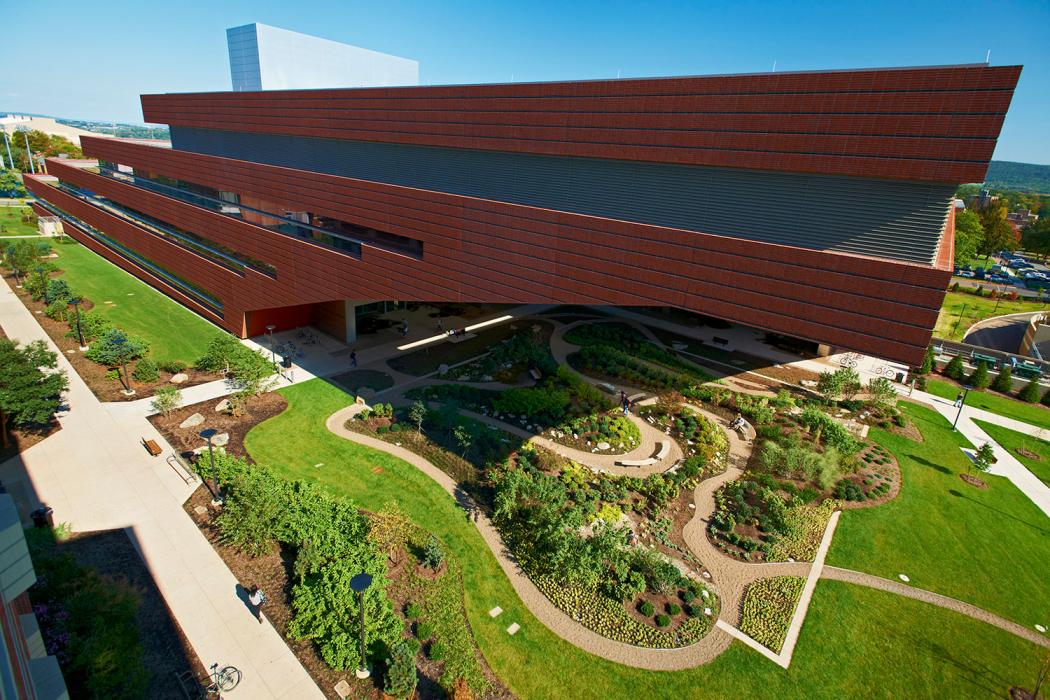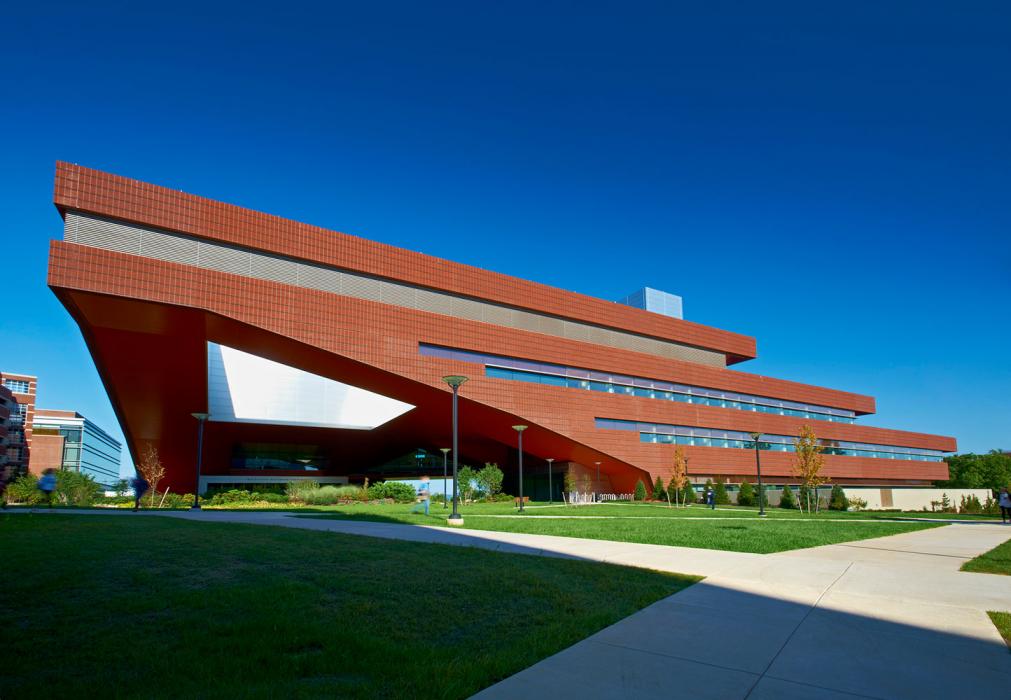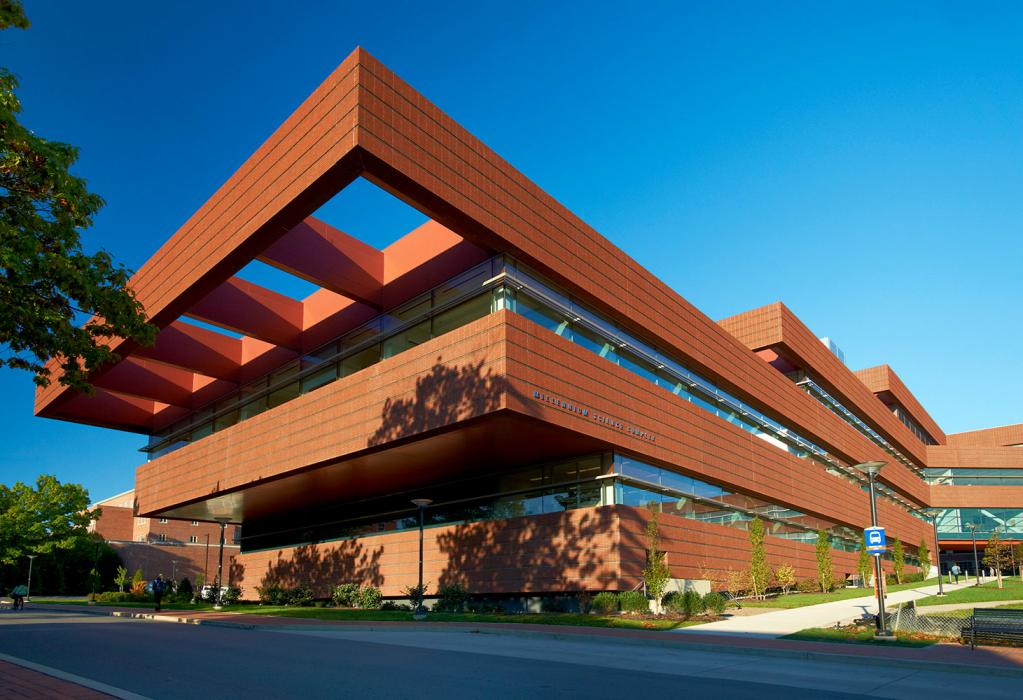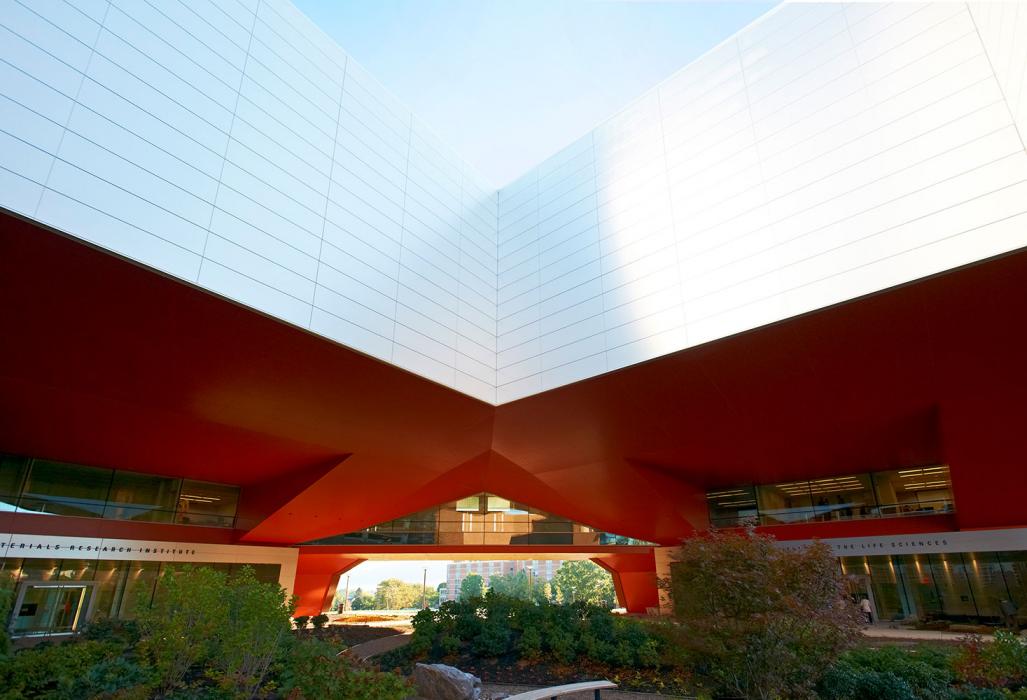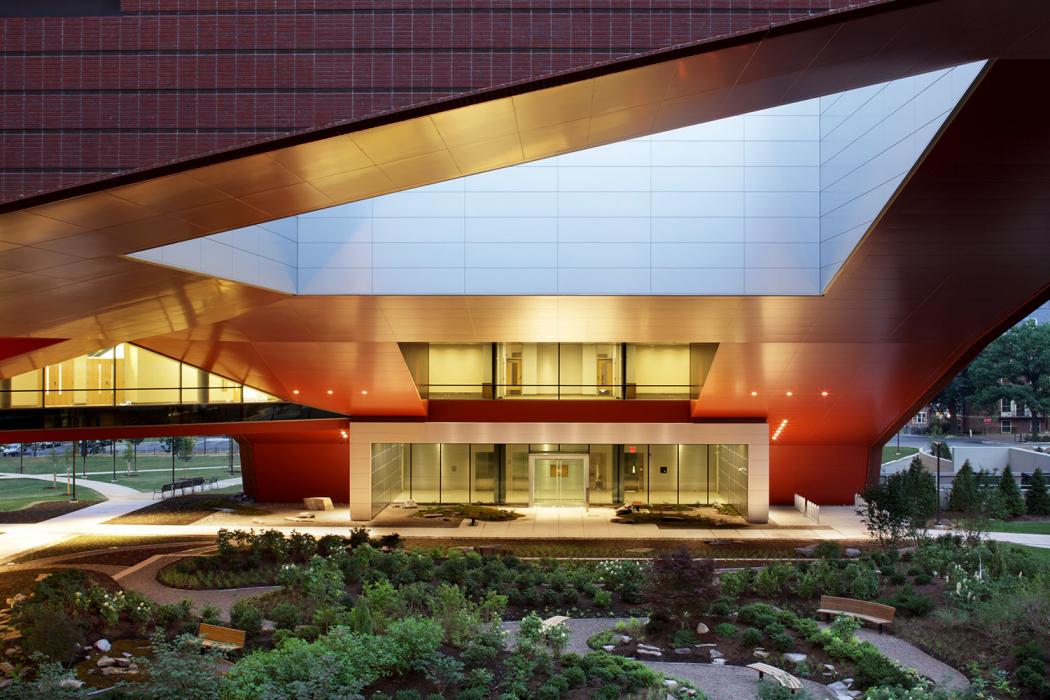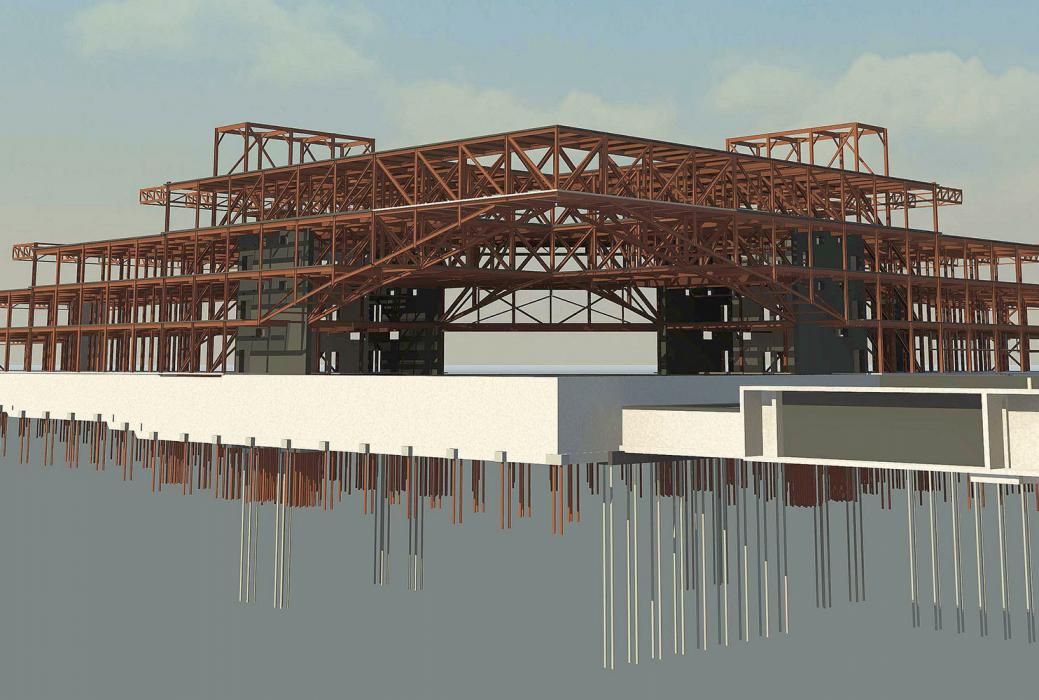PSU Millennium Science Complex
One of the first buildings in the United States designed to support the integration of the physical and life sciences.
A New Center for Integrated Science
The Millennium Science Complex, in the heart of the Penn State campus, is one of the first buildings in the United States designed to support the integration of the physical and life sciences. The Complex comprises two four-story wings with enough space to consolidate multiple disciplines that used to be housed in 40 buildings across campus. The building’s signature feature – a cantilever supported by tapered steel trusses which rises 154 feet over the entrance plaza – structurally isolates quiet rooms and a nanotech laboratory to eliminate acoustics and vibrations.
We provided structural design services to Rafael Viñoly Architects for the 275,600-square-foot complex.
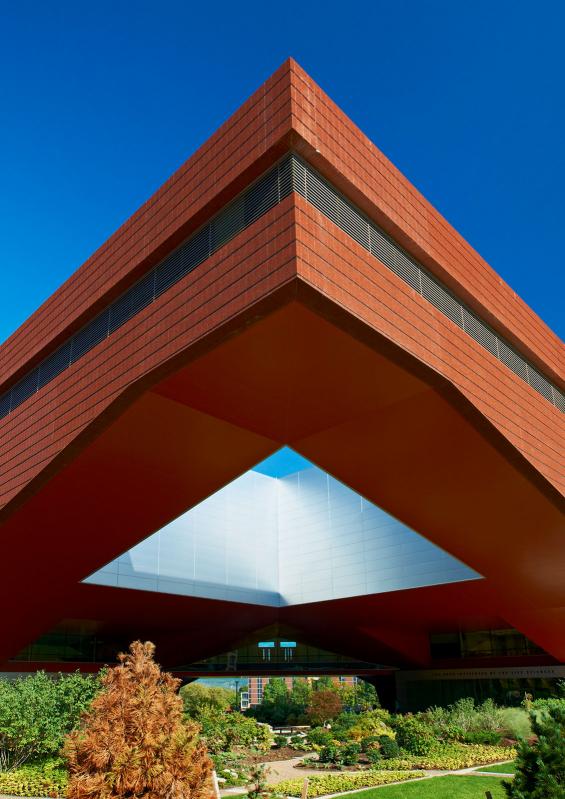 Courtesy High Concrete Group LLC
Courtesy High Concrete Group LLC
Highlights
- The footprint of each wing is approximately 550 feet long by 110 feet wide and the roof steps back 110 feet at every level creating five green roof terraces to meet LEED certification.
- The quiet space is situated on 24-inch-thick slabs on grade at the intersection of the two wings to meet strict vibration criteria.
- Wind tunnel tests helped refine the structural design to minimize vibration effects from wind loads on the cantilever.
- We helped reduce the weight of the steel supporting the cantilever to allow the 154-foot span, resulting in reduced construction costs.
- Typical bay sizes were restricted to 22 feet by 22 feet to achieve better vibration performance.
- The entire project team collaborated using Autodesk Revit for information exchange and coordination during design and construction.


